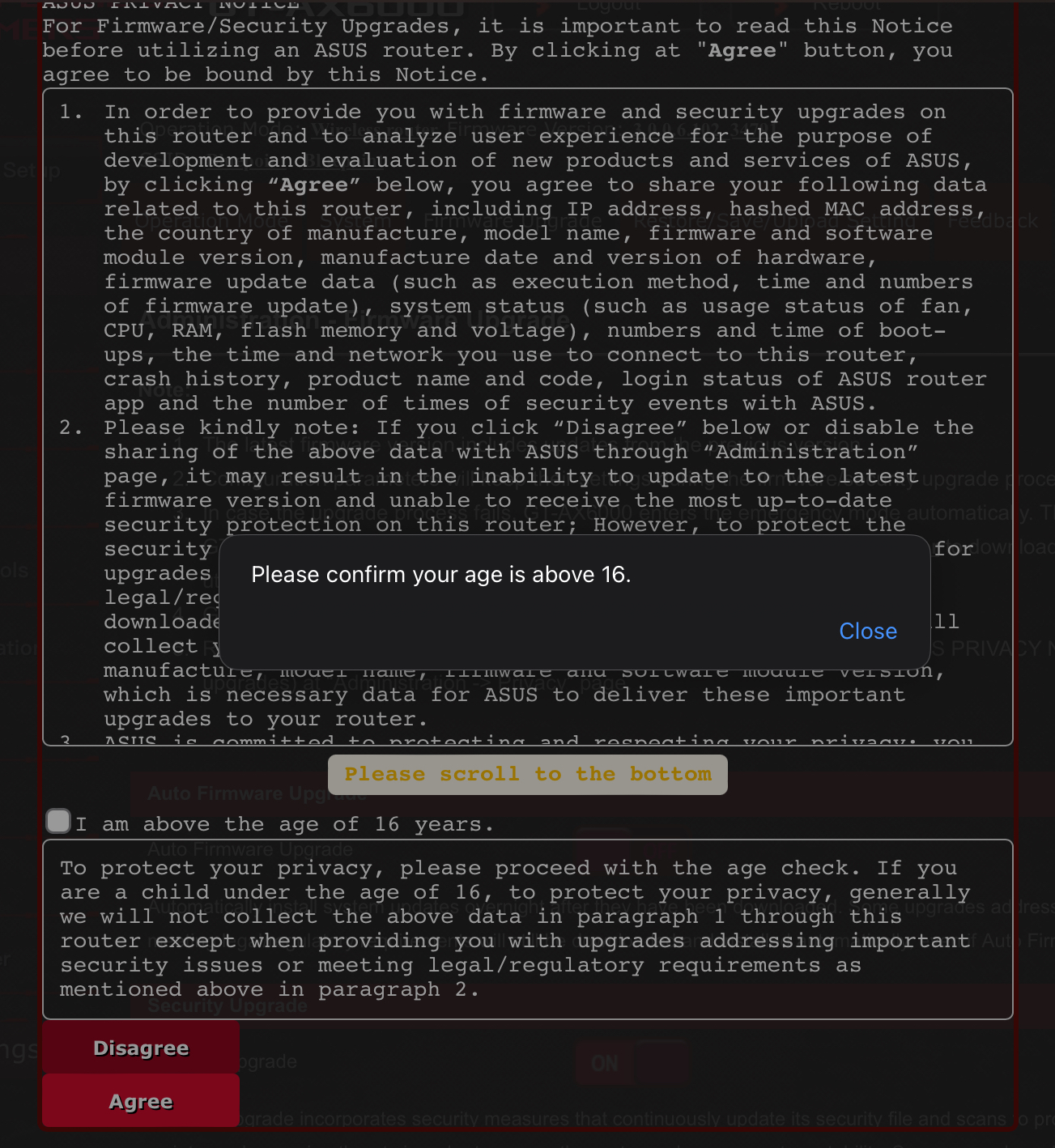
ASUS rolled out an update to its firmware (3.0.0.6.102_34791) that now requires users to be over the age of 16 and to send a slew of metrics and data back to ASUS. If you do not agree or do not check the box to verify you are 16y or older, you cannot use the router. At this time, I’m not sure if ASUS has meant to disable the router for anyone under 16 or if it’s a bug.
You can opt out at any time but lose access to a slew of features:
Please note that users are required to agree to share their information before using DDNS, Remote Connection (ASUS Router APP, Lyra APP. AiCloud, AiDisk), AiProtection, Traffic analyzer, Apps analyzer, Adaptive QoS, Game Boost and Web history. At any time, users can search the contents of the terms at this page or stop sharing their information with other parties by choosing Withdraw.
Moreover, ASUS disables automatic firmware updates and worse, all security upgrades unless you opt into the data sharing. Security upgrades perform the following:
Security upgrade incorporates security measures that continuously update its security file and scans to protect against malware, malicious scripts, and emerging threats in order to secure the router and ensure system stability. Some upgrades addressing important security issues or meeting legal/regulatory requirements will still be downloaded and installed automatically, even if “Security Upgrade” is turned off.
Edit: I have personally contacted their CEO’s office, but if others would like to voice their disapproval as well, here is a link: https://www.asus.com/us/support/article/787/


For the downvoters, in the US:
https://www.findlaw.com/consumer/consumer-transactions/what-is-the-warranty-of-merchantability.html
If you bought the router expecting it to work as advertised, you may make a claim if it doesn’t. They would have to spell out ahead of time what the limitations and requirements are in order to avoid trouble.
You have no claim. The update does not disable the router and even if you opt out, the router itself still functions, except with a few additional features missing. Telemetry and data collection does not void a warranty. There is no claim here.
That would be for the legal system to decide. If you purchased it for a specific advertised feature, and that feature was disabled unless unspoken terms were agreed to, you would have a case.
Protecting your network from internet-bound threats is one of the most important jobs of a router, and that involves receiving security updates. Once your router no longer receives security updates, you should stop using it.
That depends on how the product is marketed. If the product has any of those disabled features on the box and doesn’t outright say you need to send them telemetry data to use it, then you could argue that you bought it for that feature and can’t use it.
For instance, maybe I want to use the VPN feature, so I bought a router that supports that. And now I’m locked out of that feature unless I agree to a miles long privacy policy and sharing my telemetry data.
Plus, the lack of security updates is, at best, extremely concerning. The firewall’s primary function is to act as a first line of defense against attacks coming in via WAN. They have locked those security updates behind the telemetry sharing, and therefore it can’t even be used as a proper firewall.